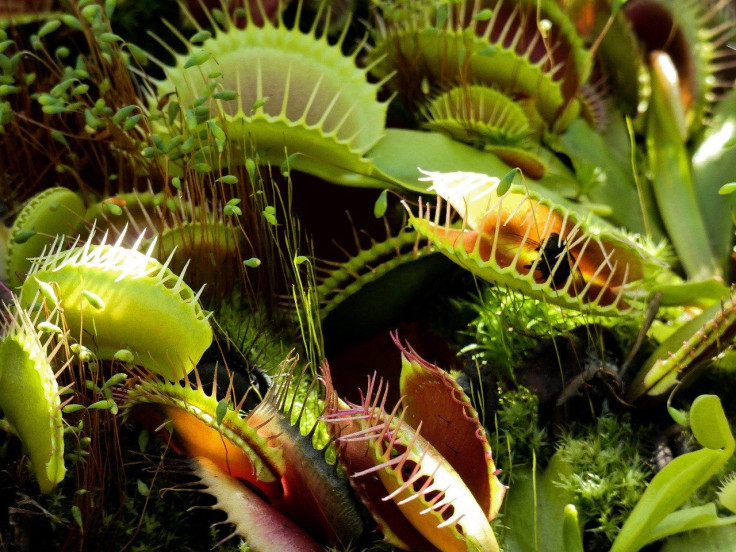Researchers Find How Carnivorous Plants Evolved Their Meat-Eating Lifestyle

KEY POINTS
- Researchers sequenced the genome of three carnivorous plants that use moving traps
- They found a common set of genes that is required for carnivory
- These genes are also present in many other non-carnivorous plants
Researchers of a new study shed light on how carnivorous plants developed a taste for meat. According to them, the path to being carnivorous might have been open to other plants as well.
The Venus flytrap, aquatic waterwheel and the sundew are some of the most popular carnivorous plants in the world. These three are actually closely related and all of them use different moving traps to capture prey.
The Venus flytrap shuts its pads when an insect lands, the sundew rolls up its sticky pads when an insect gets caught, and the waterwheel, the only member of its genus, has tiny carnivorous traps that are rapidly activated to capture prey.
The researchers of a new study sequenced the genomes of these three carnivorous plants to see how they evolved, and found even if the three have different trapping styles, they have a common set of genes that are essential to their carnivorous lifestyle.
These carnivory genes, which the researchers have traced back to a duplication event in the genome of the three plants' last common ancestor from millions of years ago, has the specific function of sensing and digesting prey as well as utilizing their nutrients.
What's interesting is that most of the genes required for insect traps is actually also present in other normal plants. However, the effect of the genes in normal plants occur in the roots to absorb nutrients. In the trapping organs of the carnivorous plants, the genes are only active when the prey is secure.
"The genetic material underlying plant carnivory is present in most non-carnivorous plants, and whole-genome duplications happened frequently throughout the plant kingdom," the researchers wrote in the study. "Thus, the path to carnivory could have been open to most plants."
According to a news release from the University of Würzburg, Germany, where some of the study authors are from, this could explain why the roots of the Venus flytrap and the sundew are reduced, and even completely absent in the waterwheel.
Overall, the researchers suggested a three-step scenario in the evolution of carnivory in the three species. The first is the whole-genome duplication from their common ancestor, followed by massive gene losses as a result of the plants developing the specialization to consume animal food then, lastly, the development of independent hunting styles.
"Obviously, these three steps can overlap and might not have happened independently," the researchers wrote.
The study was published in the journal Current Biology.
© Copyright IBTimes 2025. All rights reserved.






















